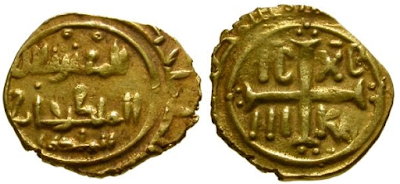 | The Norman conquest of England in 1066 is one of the most famous events in history. But few have ever heard of the Norman conquest of Sicily. Descendants of Vikings who settled in the French province of Normandy, the warlike Normans were eventually Christianized. They served as mercenaries across Europe. A band of Normans arrived in Sicily in 1059. Duke Robert de Hauteville (c. 1015 - 1085) led the conquest of Sicily. He was nicknamed Guiscard (meaning “wily” or “clever”). The only portrait coin of Robert was struck at Salerno on the Italian mainland. It depicts him in the regalia of a Byzantine emperor, a position he tried for years to attain, either by marriage or conquest. |  |
Sunday, December 6, 2020
Coinage of the Normans in Sicily
Subscribe to:
Post Comments (Atom)






No comments:
Post a Comment